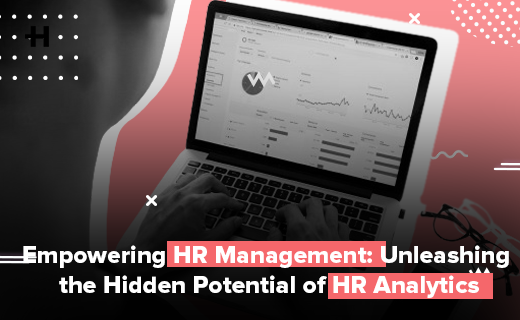In the modern business landscape, HR analytics plays a crucial role in shaping organizational strategy and performance. It’s a data-driven approach to managing people, also known as people analytics, workforce analytics, or talent analytics. HR analytics revolves around using data to answer critical questions about your organization, enabling better and data-driven decision-making.

Table of Contents
Definition of HR Analytics
HR Analytics, also known as people analytics, workforce analytics, or talent analytics, is a data-driven approach to managing people at work. It involves collecting, analyzing, and using data to inform decision-making processes and solve people-related issues within an organization. HR analytics offers insights that can drive strategic decisions, optimize business processes, and improve overall organizational performance.
HR Analytics: Beyond the Basics
HR analytics isn’t just about crunching numbers; it’s about extracting actionable insights that can steer strategic decisions and optimize day-to-day business processes. It allows you to assess the business impact of your HR policies and practices, transforming HR from a ‘soft’ function to a strategic partner aligned with business goals.
A notable case of a company leveraging HR analytics is Credit Suisse, which uses predictive analytics for strategic workforce planning, such as identifying potential future leaders and employees likely to leave the company.
Diving Deep into HR Analytics
Key Areas Influenced by HR Analytics
HR analytics can profoundly impact several key HR areas such as recruitment, performance management, and learning & development. For instance, imagine being able to calculate the business impact of your learning and development budget or predict which new hires will become your highest performers in two years. With HR analytics, such insights are within reach, allowing you to make more informed decisions about hiring and selection procedures.
The Analytics Process
The process of HR analytics starts with asking the right question. This could be something as straightforward as identifying which employees have the highest potential for progression and leadership. The next step involves selecting the right data from various systems, which is then combined, cleaned, and analyzed. However, not all insights derived are equally valuable. Therefore, it’s important to ask questions that your HR department can have an impact upon, leading to actionable insights.
Common Data Sources for HR Analytics
The range of data sources for HR analytics is vast. Internal data can include demographic employee data, payroll data, social network data, performance data, and engagement data. External data sources might encompass labor market data, population data, and LinkedIn data, among others. The data relevant to the specific project is what’s most useful.
The Future of HR: Data-Driven and Impactful
HR analytics is about identifying the people-related drivers of business performance. It takes the guesswork out of employee management and is, therefore, the future of HR. Measuring the impact of HR on bottom-line performance, often done by calculating a Return on Investment (ROI), is a powerful way for HR to increase its strategic influence. Indeed, HR analytics holds enormous value for an organization, enabling managers to measure the financial impact of HR practices and predict the future of the workforce.
Importance of HR Analytics
HR analytics is instrumental in transforming human resources from a traditionally intuitive function to a strategic partner that aligns its operations with business goals. Here are the key reasons why HR analytics is crucial:
Strategic Decision Making
HR analytics provides data-driven insights that can guide strategic decision making. By identifying trends and patterns in employee behavior and performance, HR analytics can inform strategies around recruitment, retention, performance management, and workforce planning.
Optimizing HR Processes
HR analytics allows for the assessment and improvement of various HR processes. For instance, it can help identify bottlenecks in the recruitment process or factors contributing to high employee turnover, enabling HR to implement targeted solutions.
Enhancing Employee Experience
By analyzing data around employee engagement, satisfaction, and feedback, HR analytics can help create a better work environment. This can lead to increased employee engagement, lower turnover rates, and a more productive workforce.
Demonstrating HR’s Value
HR analytics can demonstrate the value that HR brings to the organization by quantifying the impact of HR initiatives on business outcomes. This helps elevate the role of HR to a strategic partner.
Predictive Analysis
HR analytics can help predict future trends, such as potential high-performers or employees at risk of leaving. This enables proactive measures to nurture talent and mitigate turnover, respectively.
The HR Analytics Skillset
The successful application of HR analytics requires a specific skill set. This includes business consulting to identify critical issues, analytical skills to run the analysis, stakeholder management to bring everyone together and enable the analytics project, and storytelling and visualization in order to communicate effectively with the business and share results.
Conclusion
To sum up, HR analytics can profoundly transform an organization’s HR function, making it more strategic, effective, and influential. By leveraging the power ofdata and analytics, HR can become a critical driver of organizational success. This transformation involves various steps, from asking the right questions to extracting actionable insights from data and communicating the results effectively. When implemented correctly, HR analytics can turn HR from a ‘soft’ function into a strategic partner, driving both employee engagement and business performance.
As we continue to navigate the complexities of the business landscape, the role of HR analytics will only become more critical. It’s not just about understanding the workforce; it’s about harnessing that understanding to drive strategic decisions and business growth. In essence, HR analytics is about taking the guesswork out of HR and replacing it with data-driven insights.
FAQs
What are common data sources for HR analytics?
Common data sources for HR analytics include internal data like demographic employee data, payroll data, social network data, performance data, and engagement data. External data sources can include labor market data, population data, LinkedIn data, and much more. Any data that’s relevant to the specific project can be used.
What skills are required to do HR analytics?
Relevant skills for HR analytics include business consulting to identify critical issues, analytical skills to run the analysis, stakeholder management to bring everyone together and enable the analytics project, and storytelling and visualization in order to communicate effectively with the business and share results.




